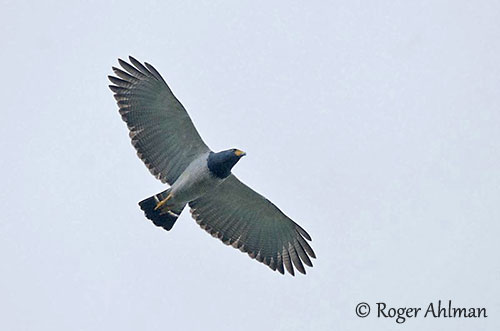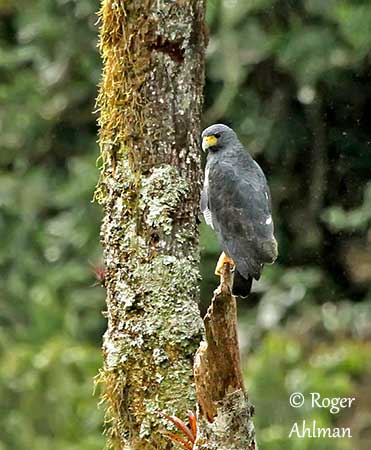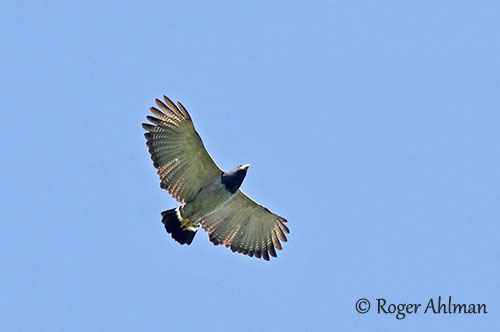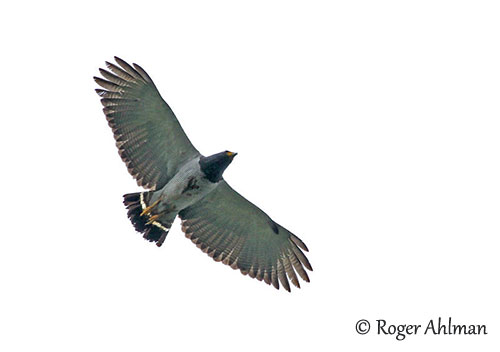
Fr: Buse barrée
Ang: Barred hawk
All: Prinzenbussard
Esp: Busardo Azoreño
Ita: Poiana barrata
Nd: Sclaters Buizerd
Sd: bandad vråk
Photographer:
Roger Ahlman
Pbase Galleries Peru and Ecuador
Text by Nicole Bouglouan
Sources:
HANDBOOK OF THE BIRDS OF THE WORLD Vol 2 by Josep del Hoyo-Andrew Elliot-Jordi Sargatal - Lynx Edicions - ISBN: 8487334156
Birds of Central America: BELIZE, GUATEMALA, HONDURAS, EL SALVADOR, NICARAGUA - De Andrew C. Vallely, Dale Dyer – Editeur: Princeton University Press, 2018 – ISBN: 0691138028, 9780691138022 - 584 pages
A GUIDE TO THE BIRDS OF COLOMBIA by Steven L. Hilty and William L. Brown - Princeton University Press – ISBN 069108372X
Birds of Ecuador De Robin Restall, Juan Freile – Editeur: Bloomsbury Publishing, 2019 – ISBN: 147297249X, 9781472972491 - 576 pages
Birds of Western Ecuador: A Photographic Guide Par Nick Athanas, Paul J. Greenfield – Editeur: Princeton University Press, 2016 – ISBN: 140088070X, 9781400880706
Birds of Nicaragua: A Field Guide De Liliana Chavarría-Duriaux, David C. Hille, Robert Dean – Editeur: Cornell University Press, 2018 – ISBN: 150170950X, 9781501709500 – 480 pages
Raptors of Mexico and Central America De William S. Clark, N. John Schmitt – Editeur: Princeton University Press, 2017 – ISBN: 1400885078, 9781400885077 - 272 pages
RAPTORS OF THE WORLD by James Ferguson-Lees et David Christie - Helm Identification Guides – ISBN: 0713680261
Global Raptor Information Network - Working to Conserve Birds of Prey in nature
Avian Report - The Barred Hawk: Still a hypothetical species on the list of birds of Peru
SORA-FIRST REPORT OF THE NEST OF THE BARRED HAWK (Leucopternis princeps) IN PANAMA
Wikipedia, the free encyclopaedia
Barred Hawk
Morphnarchus princeps
Accipitriformes Order – Accipitridae Family
INTRODUCTION:
The Barred Hawk is found in Costa Rica, Panama, Colombia, Ecuador and Peru.
It frequents moist montane forest, heavily forested foothills and lower slopes, more often between 900 and 1,600 metres of elevation. It feeds on various vertebrates and large insects. It nests in a structure made with sticks and leaves, placed on rocky ledge surrounded by vegetation, but some observations also indicate nests built in trees.
The Barred Hawk is threatened by habitat destruction, involving the decline of the population. But currently, the species is not globally threatened.
DESCRIPTION OF THE BIRD:
Biometrics:
Length: 53-58 cm
Wingspan: 122-124 cm
Weight: 1,000 g
The Barred Hawk is a medium-sized bulky raptor with short tail and broad, rounded wings.
The adult has slaty black/grey entire upperparts, head, throat and upper breast. Lower breast, underparts and underwings are white and finely barred dark grey to blackish. The trailing edge is blackish. The tail is black with only one median white band, but there are some indistinct traces of another band on the undertail.
When the bird is flying, the dark head and upper breast contrast with the pale underparts that look often unbarred at a distance.
The bill is dark blue-grey to grey with yellow-orange cere. The eyes are dark brown, surrounded by narrow yellow-orange eyering. The loral area is similar too. Legs and feet are yellow-orange with black talons.

Male and female have almost similar plumage, but the female may appear darker, and she is slightly larger than male (4%).
They are very similar to the Black-chested Buzzard-Eagle - Geranoaetus melanoleucus.
The immature resembles adult, but the feathers of nape and mantle and the upperwing-coverts are edged white.
RANGE:
The Barred Hawk is found in Costa Rica and Panama, and also locally in W Colombia and W Ecuador. It is usually present on both sides of the Andes, and it may be found locally on E slope of the Andes in NW Peru.
This species is visible between 900 and 1,600 metres, and more generally from 300 to 3,000 metres of elevation.
HABITAT:
The Barred Hawk occurs in wet montane-cloud forest, mostly at middle elevations depending on the range. It can be seen in wet forested foothills to lower cloud-forest slopes, and especially in timbered valleys between mountainous areas. It rarely occurs over coastal lowlands. It usually frequents subcanopy and canopy of forest.
CALLS AND SONGS: SOUNDS BY XENO-CANTO
The Barred Hawk is noisy when soaring in small groups. It gives loud, screaming “kee-yaaaar” repeated one or several times, and sometimes followed by rapid series of “wheep” notes.
It also produces a fast series of several whistles “kwee’kwee’kwee’kwee…kweéaa’…kweé’aay…”
BEHAVIOUR IN THE WILD:
The Barred Hawk feeds primarily on snakes, but it also takes frogs, large insects, earthworms, crabs and occasionally small mammals and birds.

It hunts from perch, sitting silently and motionless on a branch while looking for prey. As soon as a prey is detected, it swoops down onto the ground or the vegetation. It searches mainly for slow-moving prey items.
It usually hunts within the forest, flying from branch to branch, but sometimes also along the forest edges.
This raptor may also soar noisily in the sky, in small groups of 4-5 individuals.
The breeding behaviour of the Barred Hawk is poorly known.
Some observations describe both mates performing aerial displays with sweeping dives. They may even grasp their talons in flight, while they swirl briefly earthwards.
The Barred Hawk is probably sedentary.
This raptor is able to move easily through the thick forest canopy thanks to its medium size.
It often soars on flat wings over forested ridges while calling loudly. It often soars quite high.

REPRODUCTION OF THIS SPECIES:
Two nests were observed in February, each contained a single white egg.
The nest found in Panama was on a forested rocky ledge, about 30 metres above the forest canopy. It was placed on a small ledge under an overhanging rock surrounded by vegetation. This nest was made with small branches and leaves and was about 100 centimetres in diameter.
The second nest was found in NE Ecuador. It was also built on a rocky ledge, about five metres from a waterfall. Two vertical rocky walls converged, forming a corner, 6 metres above the ground. The nest was placed there. The close rocky ledges were covered in moss and grasses. The nest was made with mossy sticks and the cup was lined with fresh leaves.
The female seems to lay a single white egg. She incubates probably alone, but the duration of this period is currently unknown. At hatching, the chick is covered in white down. It leaves the nest about 80 days after hatching, and probably still depends on adults for food. No more information.
PROTECTION / THREATS / STATUS:
The Barred Hawk is threatened by habitat destruction caused by deforestation, and the population, estimated at less than 10,000 mature individuals (670/6,700) is suspected to be declining in some areas.
But the species is not considered globally threated, and the Barred Hawk is currently evaluated as Least Concern.
